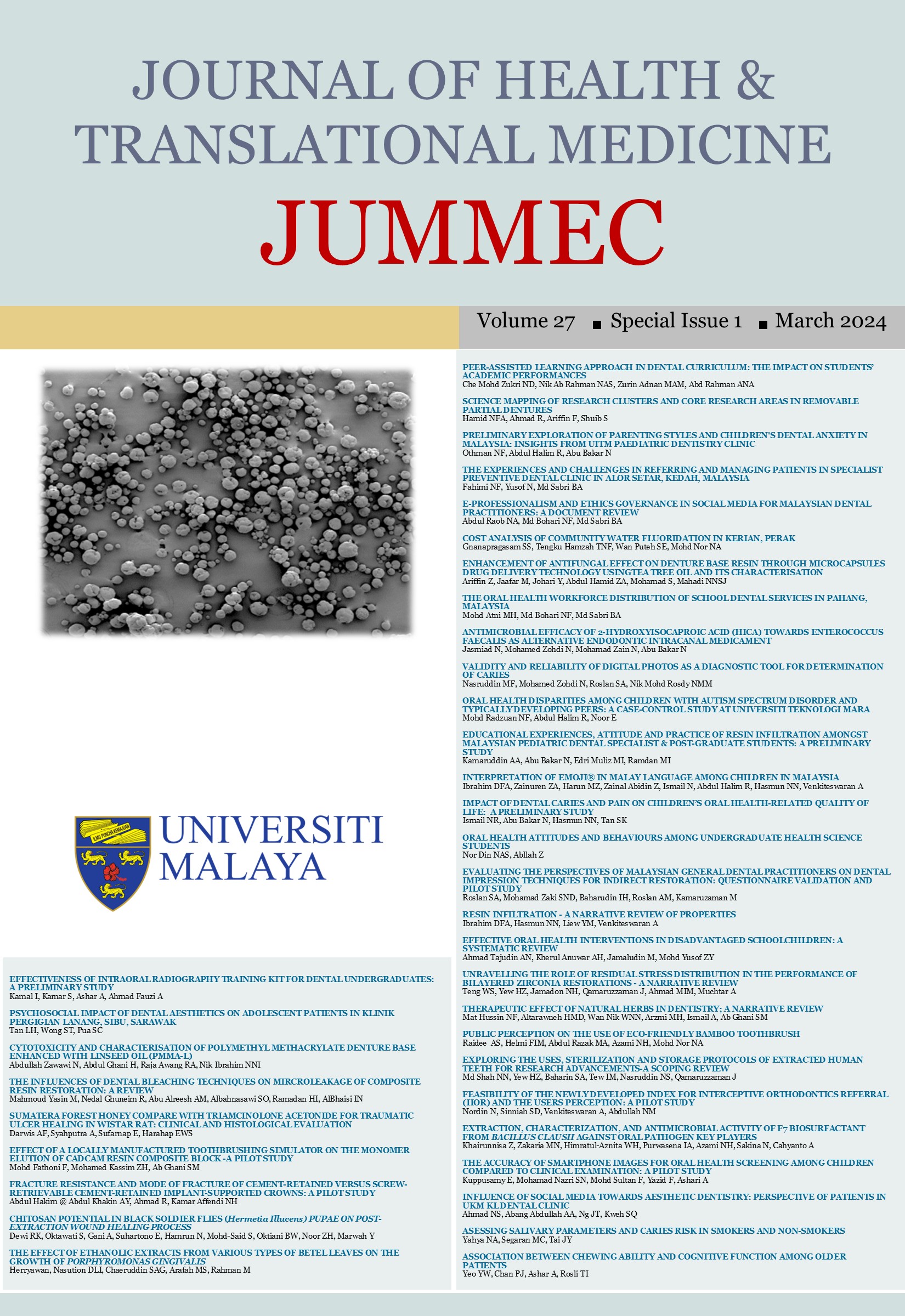POTENTIAL OF CHITOSAN BLACK SOLDIER FLIES (Hermetia Illucens) PUPAE ON POST-EXTRACTION WOUND HEALING PROCESS
Received 2024-03-01; Accepted 2024-03-19; Published 2024-03-26
DOI:
https://doi.org/10.22452/jummec.sp2024no1.36Abstract
Chitosan can accelerate the wound healing process by increasing inflammatory cells, such as macrophages, and increases fibroblast proliferation after tooth extraction. The Black Soldier Fly (BSF) pupae containing 35% chitin, which can be processed into chitosan and was found to have potential benefits in post-extraction wound healing. This study aimed to assess the potential of chitosan BSF pupae by monitoring the presence of macrophages and fibroblasts after tooth extraction. Chitosan BSF pupae was made into a gel preparation. Eighteen male Cavia cobaya were divided into control and treatment groups (n = 9 each). BSF pupae chitosan gel was applied to the post-extraction tooth socket in the treatment group (CBSF), while none was applied to the control group (CC). The samples were decapitated on the 2nd, 3rd, and 5th days by cutting the mandibular bone for histopathological examination, which was carried out by measuring the number of macrophages and fibroblasts through microscopic observation and data analysis. There an increase in macrophages evident in CBSF group than in CC group on the 2nd and 3rd days, while a decrease was seen on the 5th day of CBSF group than CC group. There was an increase in fibroblasts evident in CBSF group than in CC group on the 2nd, 3rd, and 5th days. Kruskal Wallis test indicated a significant difference in macrophages between the control and the treatment group (p = 0.006), and the One-way ANOVA test showed a significant difference in fibroblasts between both groups (p = 0.000). In conclusion, the application of chitosan BSF pupae accelerated the post-extraction wound healing process in Cavia cobaya by modulating the number of macrophages and increasing the number of fibroblasts.
Downloads
Downloads
Published
Issue
Section
License
All authors agree that the article, if editorially accepted for publication, shall be licensed under the Creative Commons Attribution License 4.0 to allow others to freely access, copy and use research provided the author is correctly attributed, unless otherwise stated. All articles are available online without charge or other barriers to access. However, anyone wishing to reproduce large quantities of an article (250+) should inform the publisher. Any opinion expressed in the articles are those of the authors and do not reflect that of the University of Malaya, 50603 Kuala Lumpur, Malaysia.


